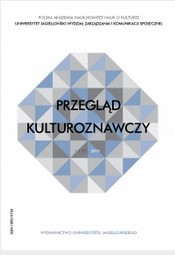Hogweed vs. Sunroot: Zoēmachy of Soviet Postanthropocentrism
Hogweed vs. Sunroot: Zoēmachy of Soviet Postanthropocentrism
Author(s): Ekaterina NikitinaSubject(s): Agriculture, Human Ecology, Environmental interactions, History of Communism, Post-Communist Transformation
Published by: Wydawnictwo Uniwersytetu Jagiellońskiego
Keywords: Sosnowsky’s Hogweed; critical posthumanism; biopolitics; vegetal sexuality;
Summary/Abstract: The article addresses the issues of vegetal subjectivity, sexuality and corporeality in the context of soviet postanthropocentrism and critical posthumanism. The narrative focuses on the figure of hogweed which in Soviet times was designed to rebalance the post-war economy on a par with humans, but today has become an embodiment of trauma, a toxic monster to be destroyed. Referring to the negative consequences of soviet postanthropocentrism, flourished in the 1920s, in particular to the notion of political interpellation of the non-human and dehumanization of the human, the author considers today’s ferality of post-soviet territories as a special form of the sympoetic co-existence. Such kind of sympoesis of humans, animals, plants and other species connected by different economic, political and biological relationships implies the question about the need for affirmative biopolitics (Roberto Esposito) which accepts life in all its strange and unusual for the human eye manifestations. Similarly, the hogweed—an alien that burst from the non-ecological zone and violated the harmonious order of flora and fauna—represents an inverted ecocriticism that refers to the dark side of ecology and there, on the dark side, searches for sources of harmonization. The hogweed entails environmental thought, and is monstrously affirmative.
Journal: Przegląd Kulturoznawczy
- Issue Year: 40/2019
- Issue No: 2
- Page Range: 135-150
- Page Count: 16
- Language: English

